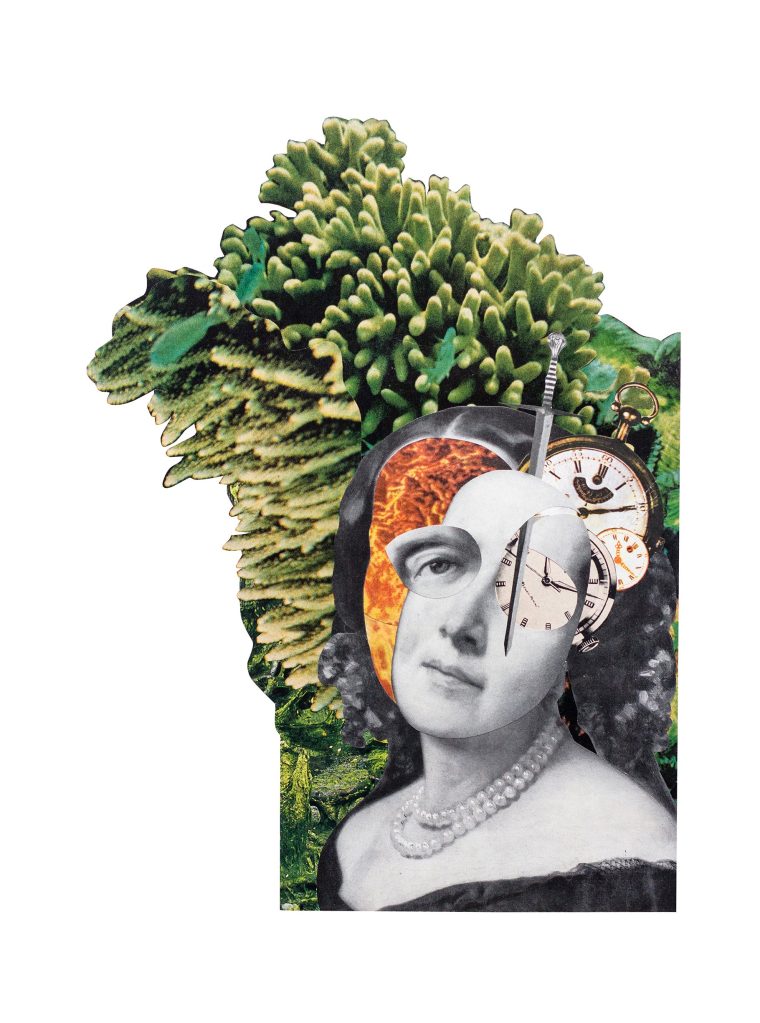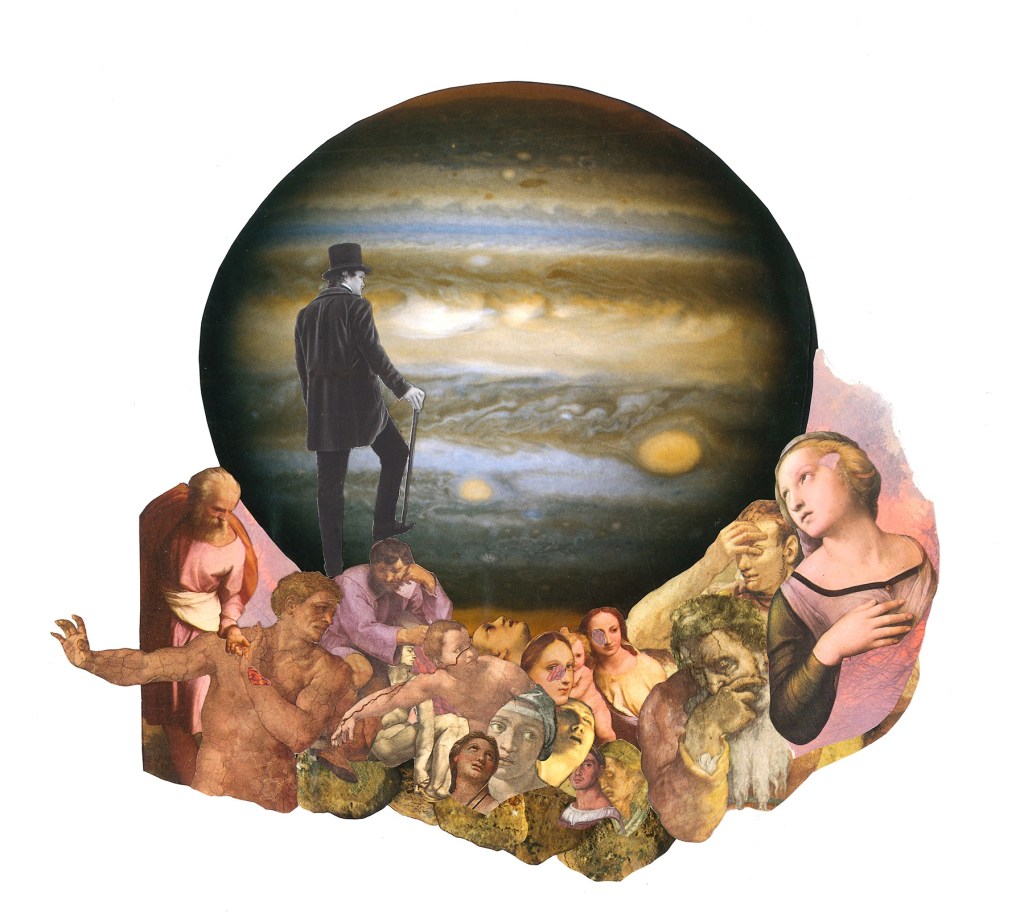- Tell us a bit about your background please and how you started working on collages.
I studied photography and also have some studies in humanities. But it was during 2013 that I discovered the collage world. I had to present ideas for my photography thesis and at the same time I was living a personal situation that was very hard to handle because my mother was dying of cancer. I lived with her and I was taking care of her and for that reason was very hard for me to concentrate and develop my project. So I started to explore me and as a result of that process I discovered different and new ways of creation. The fact that I had to work with my hands, with my body, and not with a digital support, allowed me to open a new channel where I could connect my personal circumstances with my creations in a much more direct way. Finally I ended in the collage and decided that my thesis would be about this new artistic possibility that I had discovered and that I would create images, as in photography, but based in a lot of different images. I would disarm reality to create a new one, one that would satisfy my needs of that time. My need to express in my work everything that I was feeling about life and death, the nonsense of life, the questions without an answer, the uncertain that we have to deal with every day, how vulnerable we are. My relation to the collage was born from a deep need of exorcise what I was living and assume that my mother was going to die. The creation of collages was and still is a ritual of healing to me.
- What are the main narratives and themes explored in your projects?
In relation to my first answer my projects always explore in the human vulnerability, in our finitude, in our loneliness and suffering, and how we deal with them. When I did my thesis during 2013 my characters had a passive contemplative attitude and they were always submitted to their tragic reality. But as I cured my scars and pains this suffered a transformation. In my last project my characters have a contemplative but not inactive attitude. Now they deal with their fears and never loose curiosity for all that surrounds them. Now they stay firmly and confront reality. They are surrounded by natural landscapes that are the morrow for their inner interiority. They overcome their fears and look for their personal meaning of life.
- Which roles do women in your collages usually occupy?
I´m not used to do a differentiation between women and men. They both suffer the same destiny in my collages: have being thrown to this reality without any instructions of how to survive. Lately I started working in some collages dealing directly with feminism, but they are not part of a specific project. In the future I would like to explore more in this topic and use my work as a tool for complaint about the terrible conditions that some women have to face or the unfair place that society give to us.
- Would you collaborate with someone in co-creating a collage or do you think of it more as a lonely process?
Definitely I need to work alone. When I tried to work in group I couldn’t concentrate. I think that art needs a deep connection with ourselves and in my case I need to be alone to make this happen.
- You seem to prefer analog collage to mixed media. Why is that?
I prefer analog collage because there is a direct link between my hands and body and the physical material, and this allows me to be more conscious of my creative process and also allows me to connect deeply with myself. I feel that this way is much more direct to me. Above this, and less important, I don’t have many abilities with technology but I think is because it wasn’t very interesting to me.
- What advice would you give to someone who is just attempting their own collage?
If that person is just starting I prefer to say nothing because any little advice could refrain the person´s first intuition. The only thing that I could say is “don´t think too much and just go and do it”. If this person perseveres in collage work just there I would say things about the importance of take care not only of the aesthetic part but also about the theme, the concept of the work. How it looks and what is about should dialog all the time in a harmonious way. It usually happens to me that I don´t find this dialog in contemporary artists. In this world that we live there is a lack of connection with ourselves and you can see the result of it in art world.
- What are you working on at the moment?
I’m working in a project that is called “Transversal”. It’s a series of eight to ten collages and its name is because it proposes that these human worries about death and nonsense of life transcend a particular time and social or cultural context. These collages have the same man as the main character. And as I said before he has an active attitude to confront his worries and fears. He holds on them to find himself. The other characters or elements from these collages represent different moods and also the uncertain, incomprehensible, the immeasurable.
Check out more of Belén’s work here.


